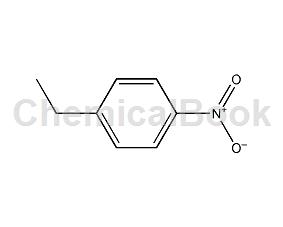Overview[1]
P-Nitroethylbenzene is a light yellow liquid. Easily soluble in ethanol and ether, soluble in acetone and benzene, but insoluble in water. It is mainly used in the production of p-nitroacetophenone, an intermediate of chloramphenicol, and is also used in other organic synthesis.

Apply[2-3]
Examples of applications of p-nitroethylbenzene are as follows:
1) Synthesis of ketoprofen. It synthesizes o- and p-nitroethylbenzene from ethylbenzene. The mixture of o- and p-nitroethylbenzene directly undergoes carboxylation reaction, hydrogenation reduction reaction, and benzoylation reaction without separation, and then undergoes deamination reaction to obtain ketoprofen. The crude product is then purified to obtain ketoprofen product. Adopting the present invention, o- and p-nitroethylbenzene directly undergo carboxylation reaction with cheap carbon dioxide without separation, and the reaction is safe, environmentally friendly, and cost-saving; aminophenylpropionic acid and benzoyl chloride directly undergo the Fu Ke reaction, with fewer reaction steps and low cost. Low cost and less waste emissions; copper powder is used as a catalyst and isopropyl alcohol is used as the reducing agent, which not only saves costs but also avoids the treatment of phosphorus-containing wastewater.
2) Biomimetic catalytic oxygen oxidation of p-nitroethylbenzene to prepare p-nitroacetophenone. This method uses p-nitroethylbenzene as raw material, under normal pressure and without solvent, using 1~30ppm mononuclear metal porphyrin. Any one or two combinations of phosphine and μ-oxygen-binuclear metalloporphyrin are used as catalysts, oxygen is introduced at a flow rate of 10~60mL/min, the reaction is initiated at 150~200℃, and then the reaction is carried out at 80~128℃ for 6~ 18h, p-nitroacetophenone was obtained. The method of the present invention adopts high-temperature rapid initiation and low-temperature reaction, which makes the reaction initiation time extremely short, greatly shortens the reaction time, improves the reaction efficiency, reduces energy consumption, reduces operating costs, and increases reaction safety.
Main reference materials
[1] Concise Dictionary of Fine Chemicals
[2] CN200710169101.1 Method for synthesizing ketoprofen using ethylbenzene as raw material
[3] CN201010103450.5 Method for preparing p-nitroacetophenone by bionic catalytic oxygen oxidation of p-nitroethylbenzene

 微信扫一扫打赏
微信扫一扫打赏

